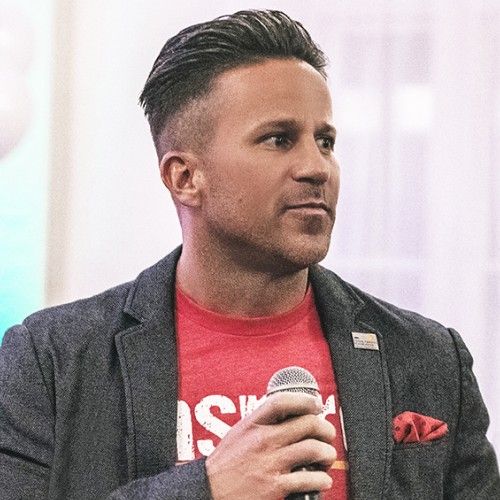Continued professional education is not a new concept in the workplace. For years, teachers, accountants, lawyers, and many other professions have mandated the continuation of professional education for these individuals to be up to date on the new legislature and field changes. However, for unrequired industries, these educational opportunities are equally as important. Seeking developmental opportunities can be difficult, professionals are often worried that their employer may perceive their participation in these programs as dissatisfaction or intent to leave their current role.
Attending development and growth programs relevant to any industry is essential for personal growth, career advancement, and performance enhancement in nearly every role. Continued education programs encourage life-long learning, stress the importance of keeping up with industry trends and practices, and exhibit the value of new skills and perspectives within an individual's career.
Educational and professional development opportunities within the workplace have become scarce. It is a challenging task for managers to find developmental programs for a variety of roles and, focuses. Managers often feel lost with configuring resources to upskill their employees. Managers often struggle to encourage their direct reports to seek continual development because they want to maintain the employee's commitment and focus in their current role. Seeking professional development opportunities does not directly indicate that an individual is dissatisfied or unhappy in their role. Those motivated by learning and new environments may become more committed to their role with the opportunity for professional growth.
Nevertheless, each individual must take their advancements into their own hands. As creatures of habit, it is easy for humans to get stuck in a rut or become complacent in their jobs. Every individual must take charge and drive their career paths and advancements by proactively seeking opportunities to broaden their knowledge, perspectives, and experiences.
Professional development programs take on a variety of forms and focus. Based on interests, level of formality, and availability, individuals can find the perfect space to grow their capabilities. However, seeking these opportunities through employers may not yield adequate opportunities for development or learning. To find the best-fit opportunities, individuals should conduct their own research and determine what the best next step may be to broaden their knowledge, skills, and experiences.
Finding adequate options for development programs and determining the best route for career advancement is a challenging task for most. Depending on the formality, commitment and cost, there are different routes best for specific scenarios. Here is a deep dive into 3 Categories of learning opportunities for direct reports seeking professional development and advancement programs:
- Workshops
Attending workshops or seminars relevant to any professional industry is a stepping-stone to advancement, growth, and performance improvement. Workshops and seminars may be presented in different ways on a variety of topics but can generally be broken into two overarching categories.
The first category is seminars or workshops focused on industry-specific topics, including niche topics or tools to help participants broaden or improve their skill set within a specific role, group, or industry. On the other hand, general skills workshops focus on over-arching topics relevant to advancement and growth in a variety of industries. General skills workshops commonly focus on topics related to leadership or soft skills such as management or organization. A general skills workshop may focus on leadership or communication and may be most impactful when entire teams participate or, in the use of preparation for leadership roles.
Interactive workshops, like executive mastermind groups, can be a great way to gain objectivity, learn from others, and improve one’s own skill set.
2. Certificates
The continuation of formal education can be a paramount tool for the development and possible advancement of professionals across industries and positions. Those seeking to continue their education in a formal setting outside of traditional secondary or post-graduate education should consider certificates and licensures. In obtaining these licensures or certificates, individuals are enabled to broaden their roles, responsibilities, and industry knowledge. For each industry or role, there are a variety of opportunities available for certifications. Compared to workshops, certificates tend to take a more formal setting. Content to obtain a certificate is commonly done through a course or a several-day seminar, usually capped with an exam. Certificates are a strong form of professional advancement because in the event that individuals seek new roles, certificates, and licensures are a concrete representation of knowledge, experience, and education in a specific field.
The AIM Insights People Leader Certification can be a great avenue for a leader to showcase their abilities and benchmark their performance compared to other leaders of similar teams.
3. Mentorship
Mentorship is a crucial tool for developing strong leaders and integrating team culture throughout different levels of the workplace. However, a seemingly informal form of professional development, establishing mentorship connections is highly impactful in an individual's ability to lead and advance in their fields.
Mentor and mentee connections are a key differentiator in individuals' capacity to learn from new perspectives and adapt in the workplace. Mentorship may be implemented in professional atmospheres through a variety of ways but essentially should aid in the personal and professional development of younger generations from those with more experience in the industry. However, not all firms or companies facilitate adequate mentorship connections. Individuals seeking mentorship may consider joining mentorship groups or joining professionally focused organizations. For example, certified public accountants (CPAs) may join the AICPA and establish mentoring relationships with other accountants who have more industry experience or, accounting experience in other focuses.
By exploring a diverse variety of options in professional advancement programs, individuals have the opportunity to improve their expertise, gain valuable skills, and expand their industry knowledge. Given the wide array of advancement opportunities, formality levels, and time commitments, every individual should actively seek opportunities to better themselves and their career path.
Professionals across all industries and roles can immensely benefit from continuous education in their fields. Regardless of position, every team may benefit from seminars on improving communication, leadership, or team culture. The most imperative key to success is drive. Those seeking promotion or advancement should take charge of their future career path, and participate in a variety of programs and activities that will enable them to succeed. No matter their success or experience, every professional has something to learn.




































































